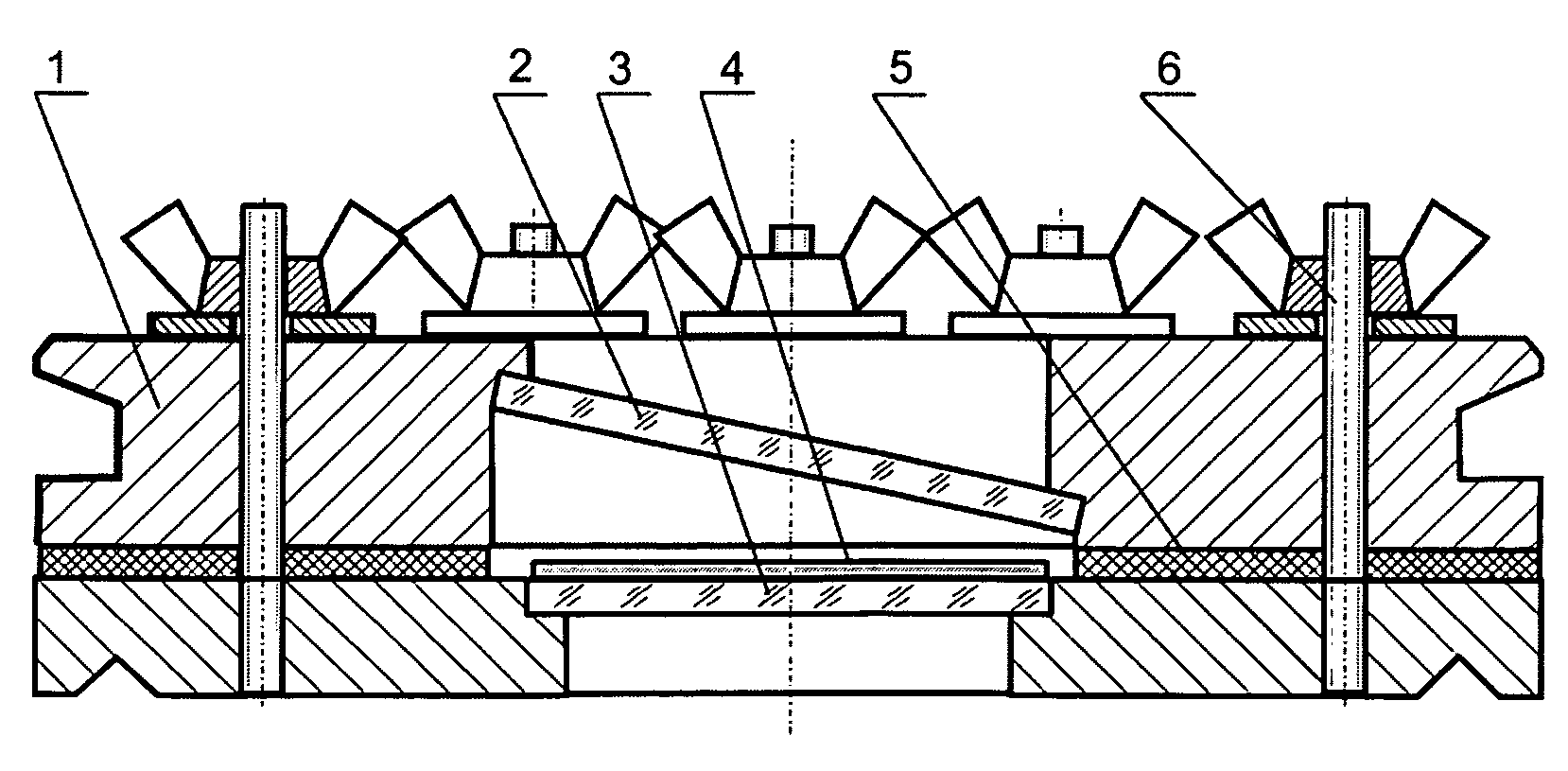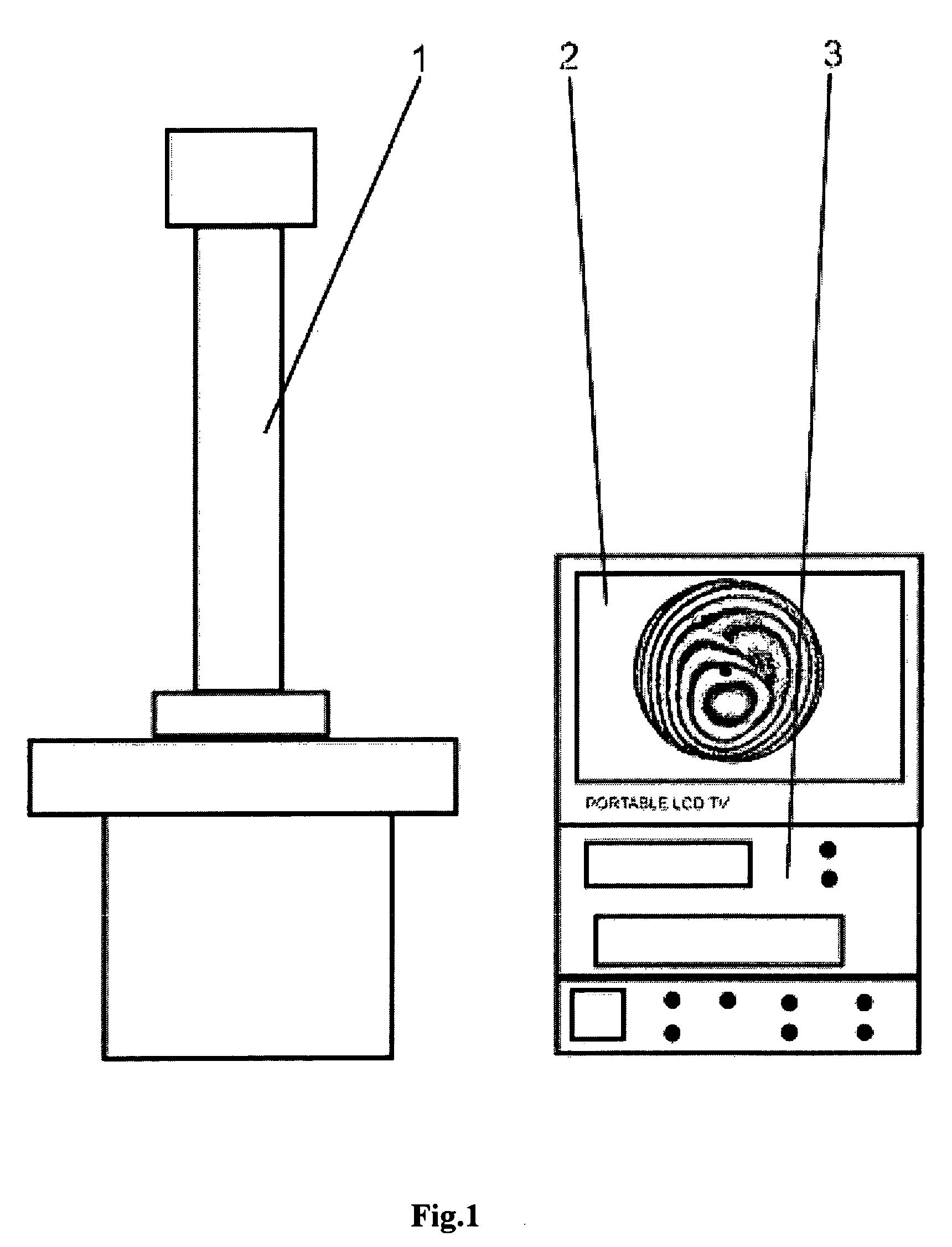Holographic interferometry for non-destructive testing of power sources
a technology of power source and interferometer, which is applied in the field of electrical engineering, can solve the problems of affecting the properties of assembled devices, affecting the service life of defective devices, and affecting the service life of such devices, so as to achieve the effect of assessing the homogeneity of electrodes, and ensuring the accuracy of measurement results
- Summary
- Abstract
- Description
- Claims
- Application Information
AI Technical Summary
Benefits of technology
Problems solved by technology
Method used
Image
Examples
example 1
[0081]A thermal battery electrode was evaluated using holographic interferometry. A test article sample was placed in a transparent container which was filled with argon. Then the sample was exposed to local heating by 1 to 2 degrees near the inner opening. Under the influence of thermal loading there occurred temperature-induced deformations of the sample.
[0082]To control for effects of experiment conditions on test results, the container with the electrode was continuously rotated in the plane normal (90 degrees) to the installation axis, its interference portrait being registered at each revolution.
[0083]The interference line images or “portraits” obtained are shown in FIG. 1 (a-r) and FIG. 2 (a-r). These portraits show local heterogeneities along the radial axis. The arrows show distortion zones of interference bands that indicate locations of electrode defects. In the center, the three yellow segments of straight lines show the position of the elements used for heating of the e...
example 2
[0085]Electrode 3 was evaluated using holographic interferometry according to the conditions described on Example 1. The interference line images or “portraits” obtained are shown in FIG. 2 (a-r). These portraits show local heterogeneities along the radial axis. The arrows show distortion zones of interference bands that indicate locations of defects in the electrode. In the center, three yellow segments of straight lines show spirals for heating of electrodes.
[0086]The location of heterogeneities in relation to optical installation scheme changes with rotation. This fact confirms presence of, and points at the location of, heterogeneities in the electrodes being studied.
example 3
[0087]To control the test the method used, a stainless steel plate that had geometric dimensions similar to those of the electrodes was made and tested. The result is presented on FIG. 3.
[0088]As shown in FIG. 3, the type of the interference bands displays gradually changing curvature that did not depend on the position of the plate in relation with the optical installation scheme. This is evidence of both the heterogeneity and isotropic properties of the test a stainless steel plate. It appears that the axially symmetric thermal loading of an object is the most effective for holographic flaw detection in circular-shape electrodes.
PUM
 Login to View More
Login to View More Abstract
Description
Claims
Application Information
 Login to View More
Login to View More - R&D
- Intellectual Property
- Life Sciences
- Materials
- Tech Scout
- Unparalleled Data Quality
- Higher Quality Content
- 60% Fewer Hallucinations
Browse by: Latest US Patents, China's latest patents, Technical Efficacy Thesaurus, Application Domain, Technology Topic, Popular Technical Reports.
© 2025 PatSnap. All rights reserved.Legal|Privacy policy|Modern Slavery Act Transparency Statement|Sitemap|About US| Contact US: help@patsnap.com



